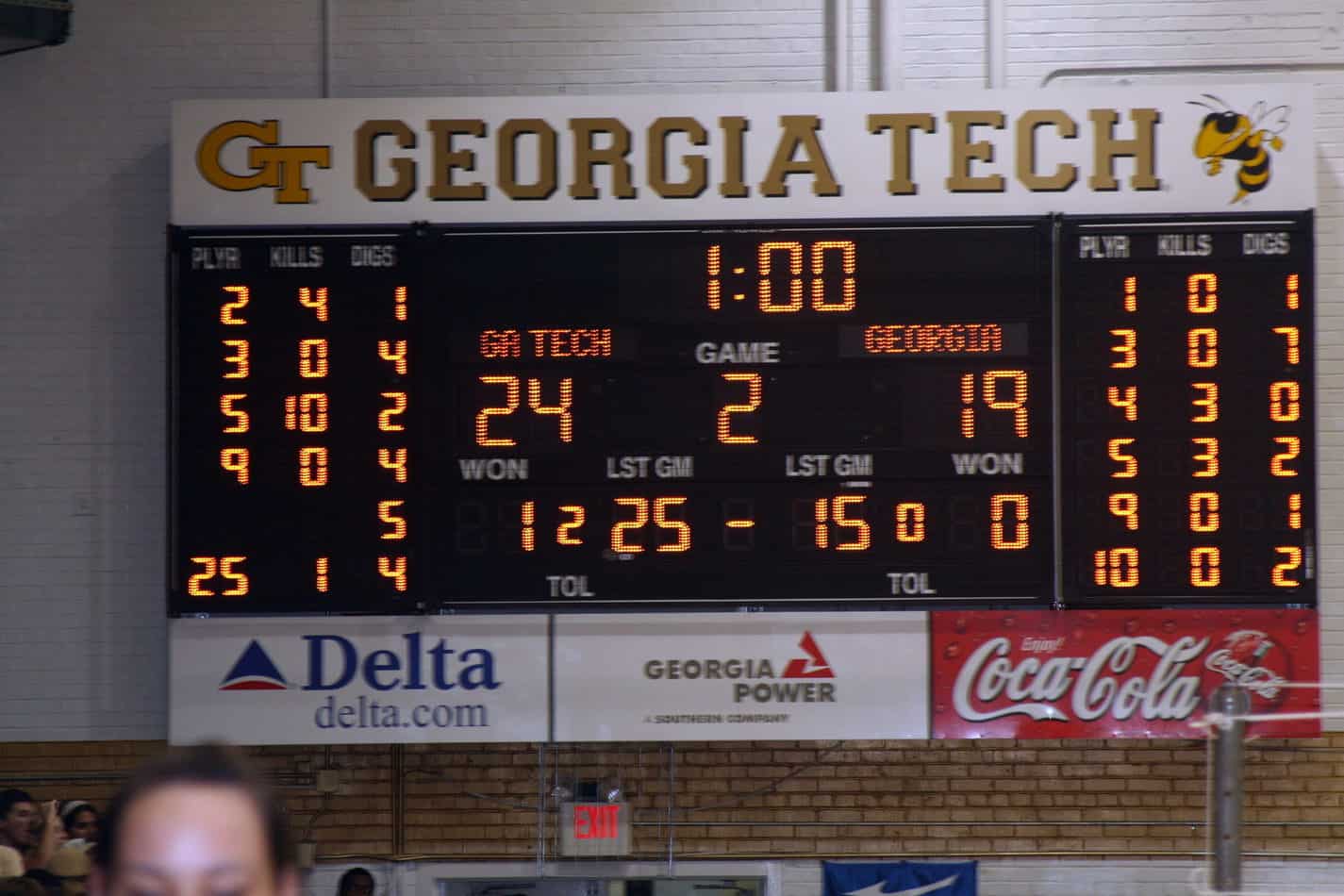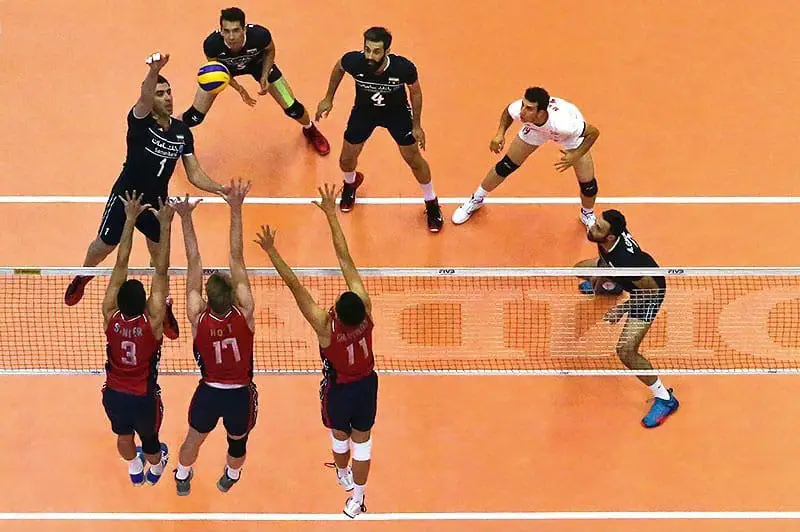Volleyball is a game that can be played in a number of different ways.
There are different types of scoring that determine the outcome of a game.
In order to score you must win a point.

But what exactly is a point?
A point is how a team scores in a game of volleyball, everytime they ground the ball or cause the other team to make an error, 1 point is awarded. In volleyball teams must play to 25 points in each set and must win by at least 2 clear points.
This means if the game is tied at 24-24 a team would have to win 26-24 to take the set.
At the start of the article, I mentioned that there are different types of scoring to determine the outcome of a game.
But just what exactly are the different types of scoring well let’s take a deep dive into this below.
Rally Scoring

The most popular type of scoring used today in volleyball is rally scoring.
rally scoring is when a point is won during a single rally.
a rally in volleyball is the time period between the ball being Served and the play ending either by Killing the ball on the floor or by causing the opposite team to make an error.
In rally scoring it doesn’t matter whether you are the team serving or the receiving team, if you win the rally you will be awarded the point.
If you were not the team in serve when you won said point, you would then be awarded the point as well as the service.
Rally scoring although being the most popular is also the newest form of scoring adopted by the sport.
The reason for this shift from the old system previously used was to make the game lengths far more predictable and also increase spectator enjoyment.
By changing to Rally scoring the games became much more action-packed and fast-paced.
Side Out Scoring

The older system of scoring that is rarely used today is known as Sideout Scoring.
Sideout scoring is where a point can only be won when your team is serving.
If you are the receiving team and you win the rally, you simply win the serve and the opportunity to score a point.
Using this method teams that were extremely well matched could go for extremely long periods without ever scoring a point.
This meant it was almost impossible to predict how long a game would last.
When the sport started rapidly growing in popularity it was important to ensure games had a more predictable length to schedule them into events such as the Olympics.
Side out scoring can still be found today albeit very rarely.
The side out scoring approach has been pulled apart and placed in part into events such as the AVP that still uses a Sideout scoring approach on game point.
In the AVP it is known as the Freeze Rule.
This was included to increase pressure and tension and make the game have a more exciting crescendo.
How To Win Points
So we know that a point is the way in which you are awarded for winning a rally.
We now know the different types of scoring used in order to give out said points.
The only left to discuss in what ways we can actually win points.
Now there is really two ways in which points can be won.
Those are making the ball hit the ground on the opposition side or alternatively causing the other team to make an error or fault.
There are many ways in which you can make the ball hit the floor on the opponent’s side.
You can spike the ball to make it hit the floor before the other team can react.
You can tip the ball just over the block and in the open court space or you can get more clever with it.
For example the setter can jump as if going to jump set and play the ball over the net themselves.
If the opposing team isn’t expecting this it can be a great way to catch teams off guard.
The other method that I mentioned is by making the other team make a mistake.
This can be done with a very hard hit that the defenders shank when passing, putting the ball into an awkward area for the defender to pass back accurately.
Or you can be really mean and give any freeballs straight to the setter on the other team.
Many teams rely on being in system, this means the pass is nice and high and straight to the setter making it as easy as possible for the setter to use all options.
When the setter takes the first ball, they obviously can’t take the second as well.
This pushes a team out of system.
For the most part when a team is pushed out of system the set will likely not be as good and generally teams will set either the nearest option or throw the ball out to the 4 position as this is the easiest ball to hit.
This allows you to really set up a block and shut down the hitting options for the opposition.
This can lead to them making mistakes, hitting the net or even double touching when setting the ball.
When you next play a game and you have to put a free ball over try playing it to the setter.
